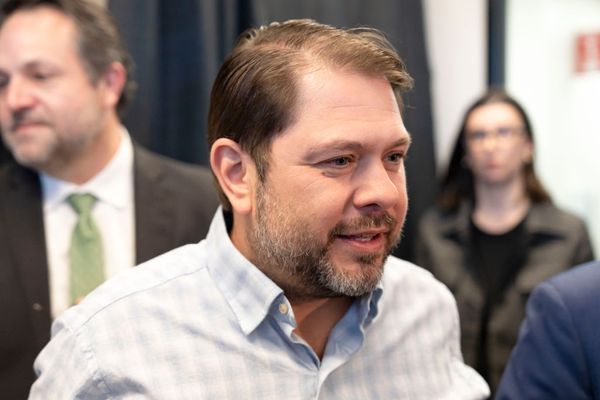
Twenty-five years ago, Bob Cabana was at the aft flight deck controls of the space shuttle Endeavour when he fired the orbiter's thrusters to connect a U.S.-built node with a Russian module in Earth orbit.
The burst closed the short distance between "Unity" and "Zarya," giving birth to the International Space Station (ISS).
"I cannot believe it was 25 years ago today that we grappled Zarya and joined it with the Unity node," said Cabana, now NASA's outgoing associate administrator, in a call to the space station's 70th expedition crew from the agency's headquarters in Washington, D.C. on Wednesday (Dec. 6). "Absolutely amazing."
Cabana marked the 25th anniversary of his and his STS-88 crew's success by joining Joel Montalbano, NASA's space station program manager, in asking questions of the orbital outpost's crew, including commander Andreas Mogensen of the European Space Agency (ESA) and flight engineers Jasmin Moghbeli and Loral O'Hara of NASA, Satoshi Furukawa of the Japan Aerospace Exploration Agency (JAXA) and cosmonauts Oleg Kononenko, Nikolai Chub and Konstantin Borisov of the Russian federal space corporation Roscosmos.
Related: International Space Station — Everything you need to know

The seven Expedition 70 crew members represent four out of the five partners in the ISS, absent only the Canadian Space Agency.
"Think of all that's been accomplished on ISS in the in the last 25 years — 3,000 research and educational investigations from 108 countries around the world," said Cabana. "[And] we've had 273 people from 21 different countries visit the space station."
"One of my favorite aspects of the International Space Station is the international part of it," said Moghbeli. "We each bring our unique perspectives, not just from our different nationalities, but also our different backgrounds."
"I think we're definitely strengthened by the international partnership. It's just like gaining redundancy when you have multiple partners working together. It's stronger and more resilient to any sort of problems or obstacles that come our way and so it definitely makes us stronger. And I think that's why we have had the International Space Station up here for 25 years now," she said.

The station's partners are now planning to operate the orbiting lab through at least 2030 and have opened access to the ISS to more commercial uses.
"Something that excites me are the number of national astronauts from countries who aren't a part of the original partnership behind the International Space Station who now have an opportunity through commercial programs to come up here and conduct science and technology development," said Mogensen. "I hope that over the next many years, we'll continue to see more and more countries send their national astronauts up here in order to increase the the international aspect of the space station."
Launches in the next year are expected to bring astronauts from Belarus, Türkiye and India, among others.
Research and the work to keep the space station in orbit is also helping advance the day when astronauts again venture beyond Earth orbit, returning to the moon and then eventually going to Mars, either as part of NASA's Artemis program or other countries' initiatives.
"We are doing a lot of experiments on how to block radiation and how we can help to save the human from that," said Borisov. "I'm wondering if we can find the material or another means of stopping the radiation so that we can find the way to travel to Mars and beyond."

Over the past 25 years, the space station has grown to encompass 16 more pressurized modules beyond the original Unity node and Zarya functional cargo block (FGB). With its backbone truss and large solar array wings, it now extends one yard shy of the full length of an American football field, including the end zones.
The 70 expedition crews have maintained a continuous presence on the space station for 23 out of its 25 years.
"There are teams of people all over the world who are figuring out every aspect of these missions, everything from our food and clothes to the science research that we'll be doing on board. There are also the ones who are operating the space station," said O'Hara. "So we're super grateful to be supported by this amazing team, and it's just a really inspiring effort to be a part."
Follow collectSPACE.com on Facebook and on Twitter at @collectSPACE. Copyright 2023 collectSPACE.com. All rights reserved.







